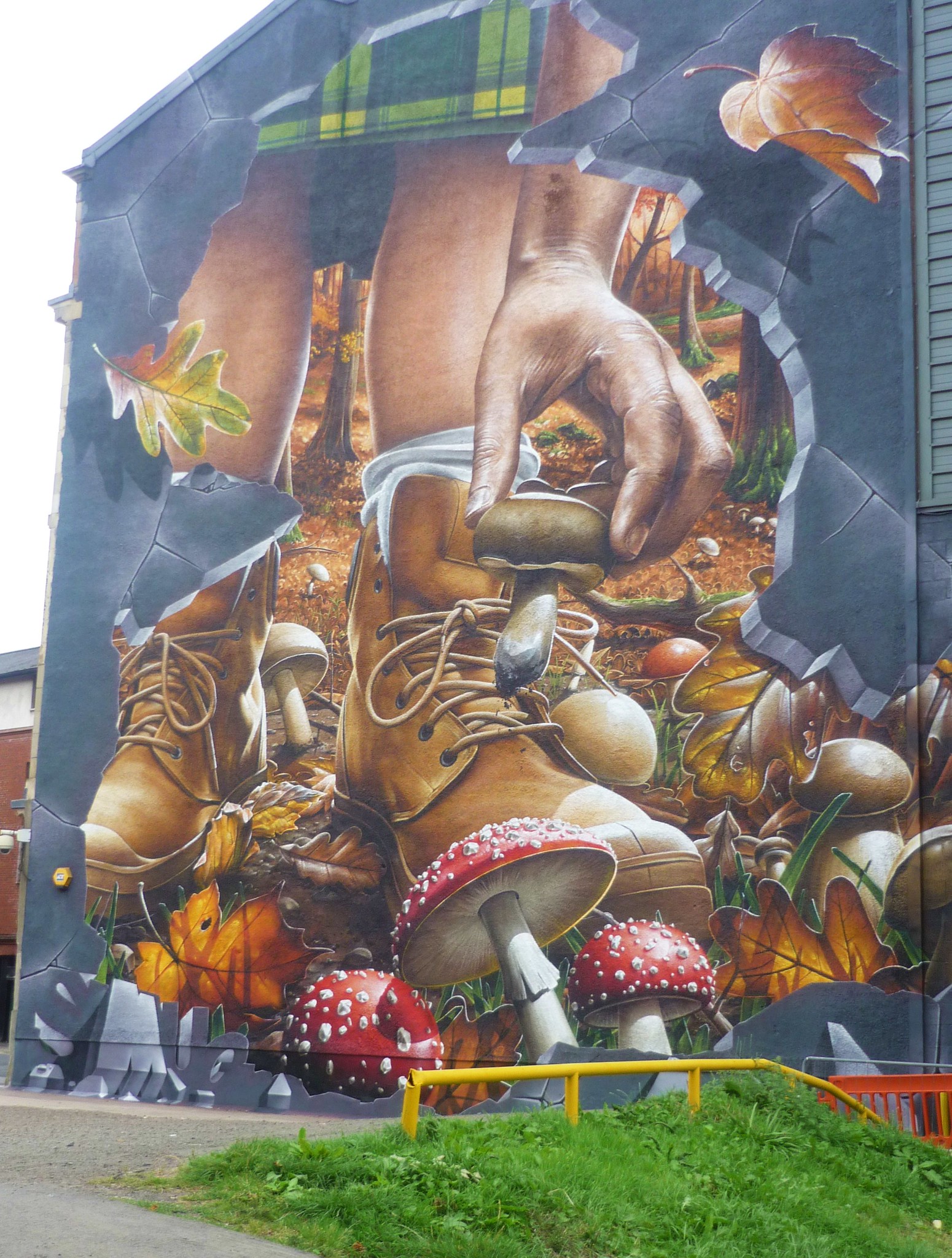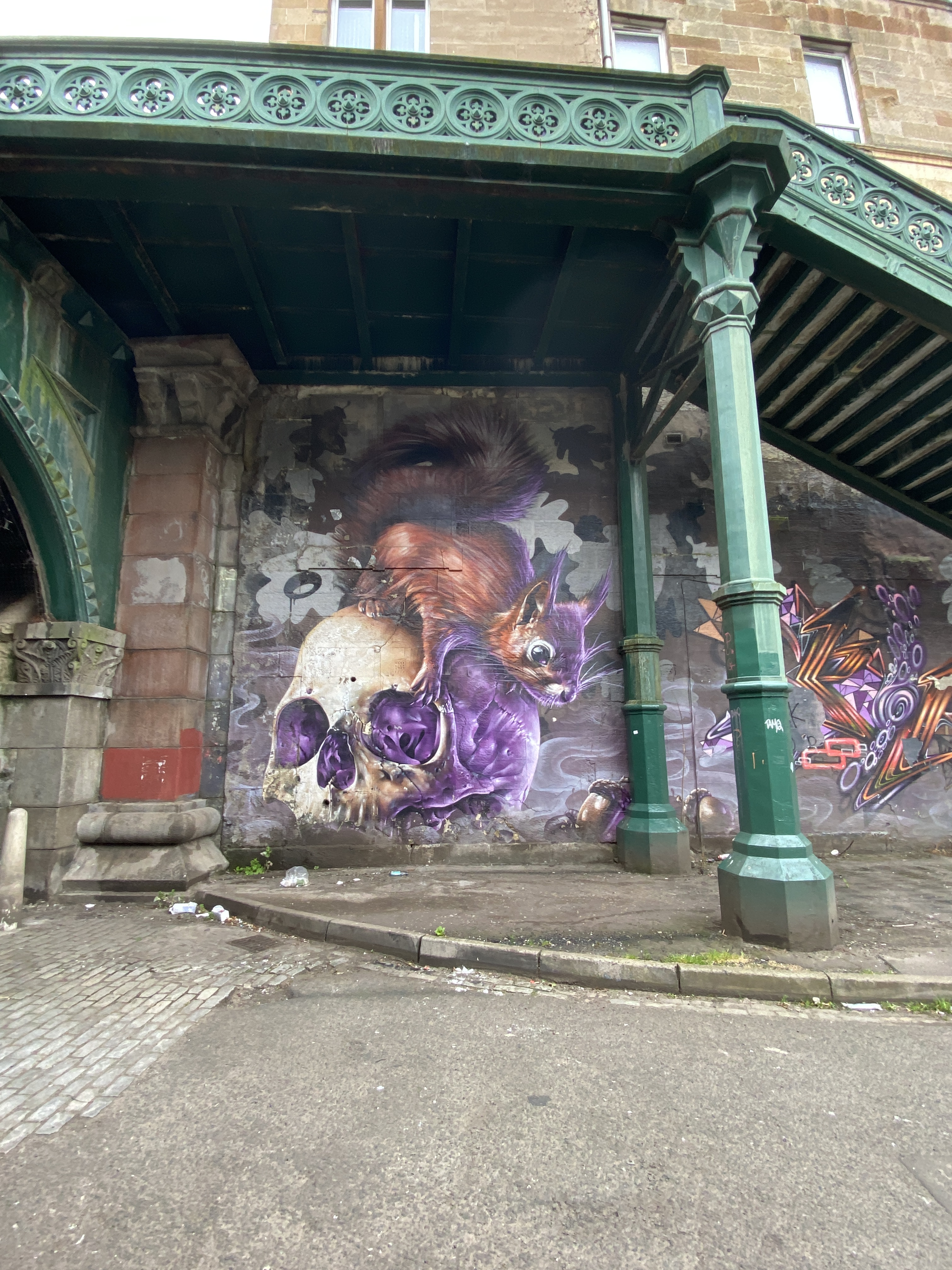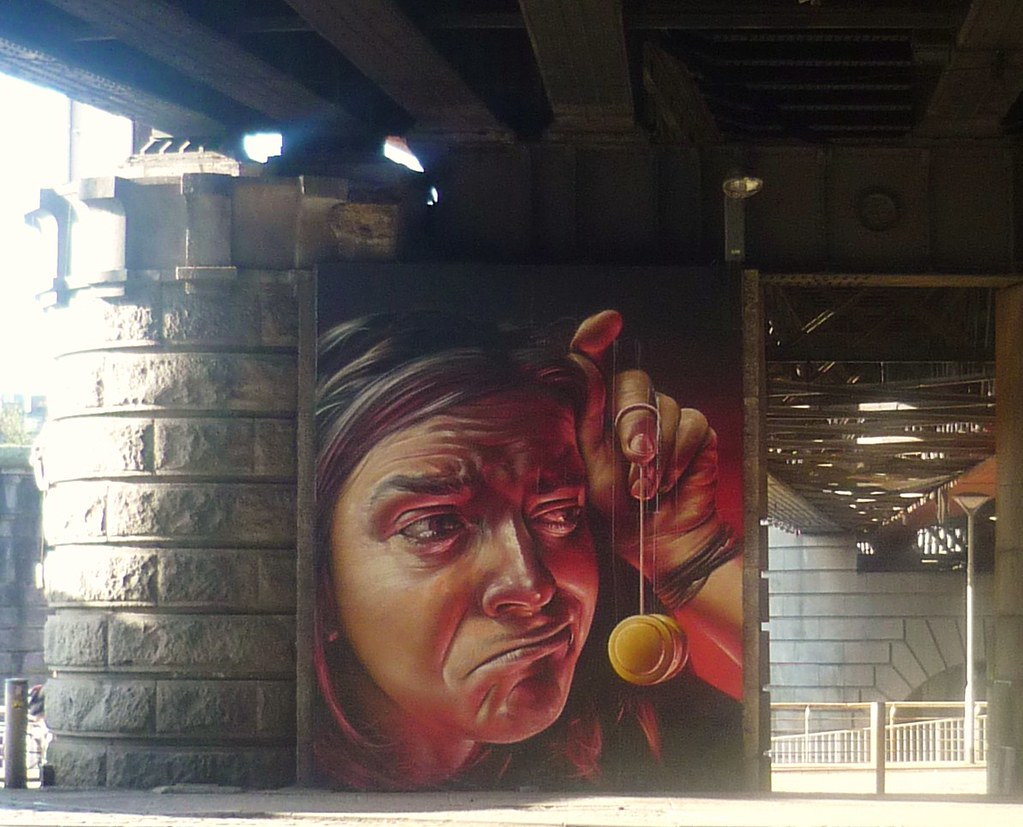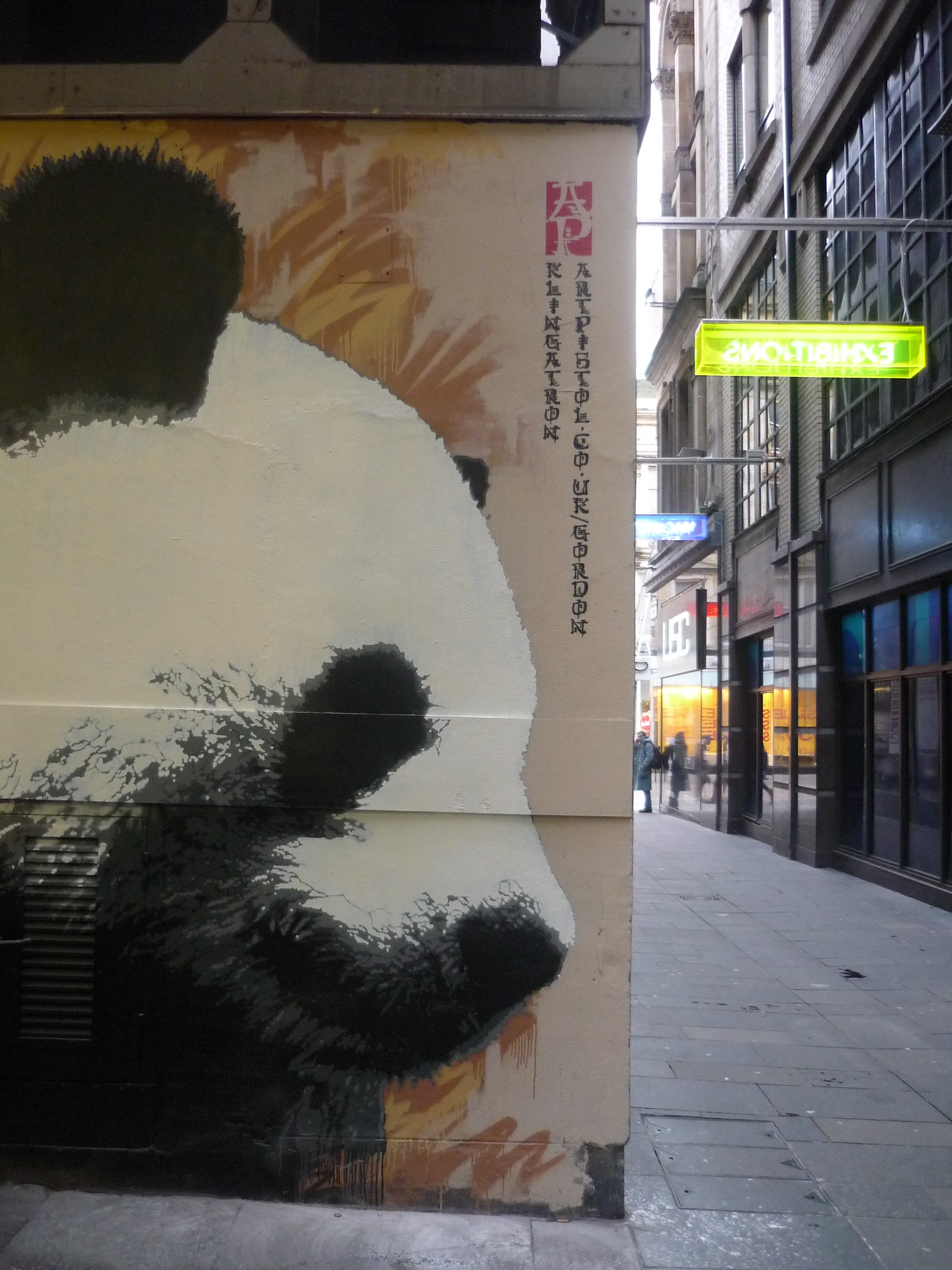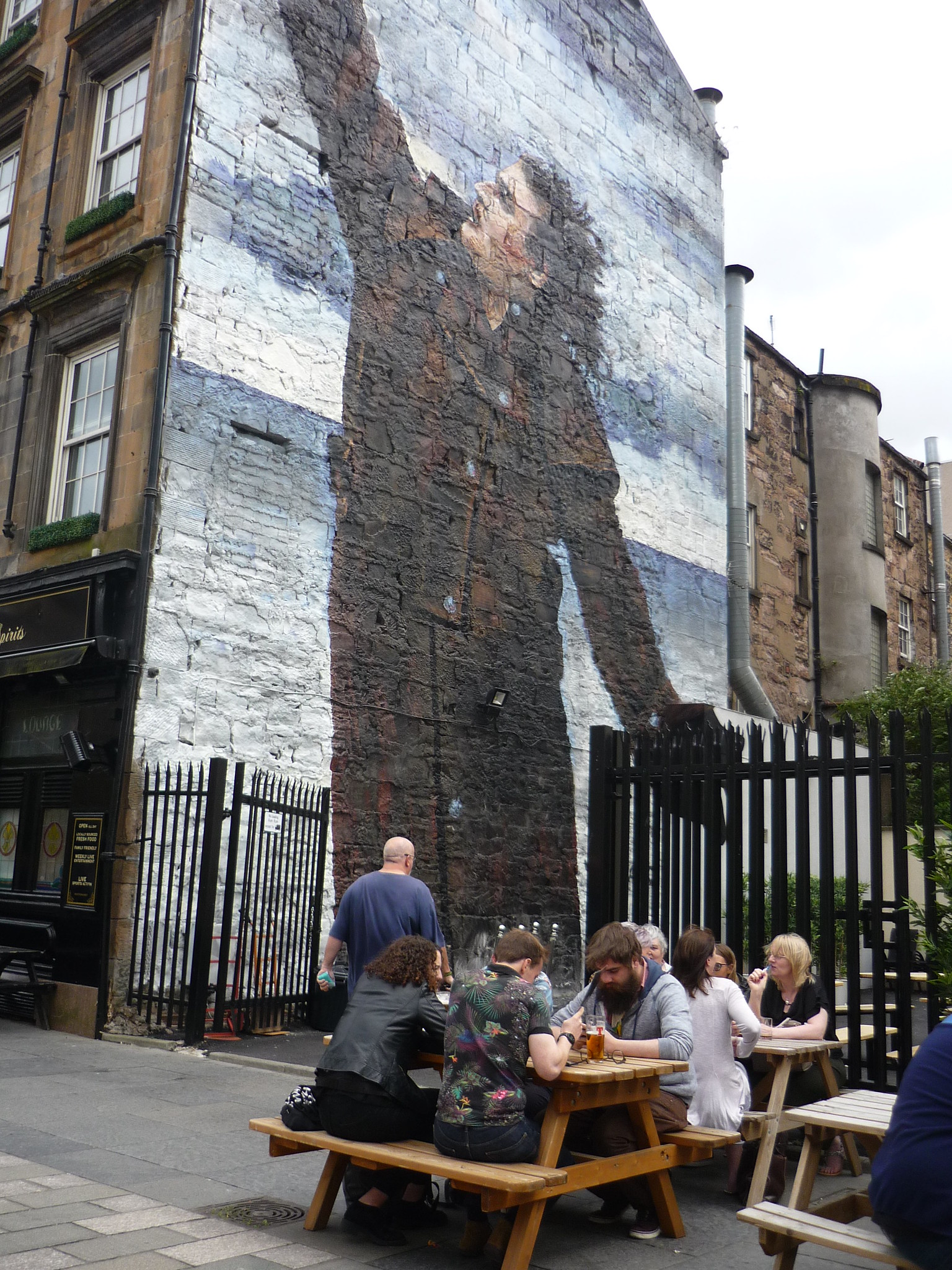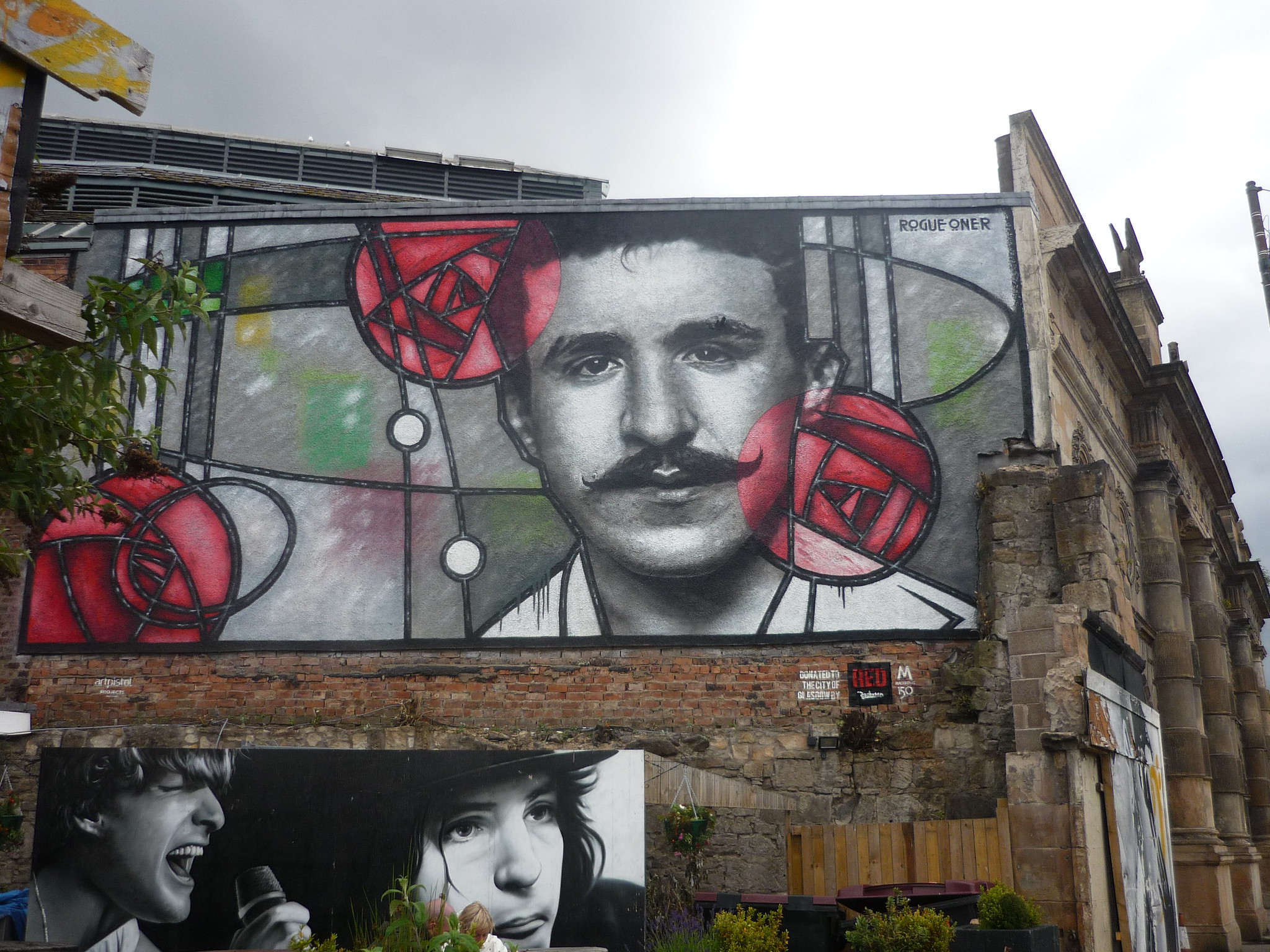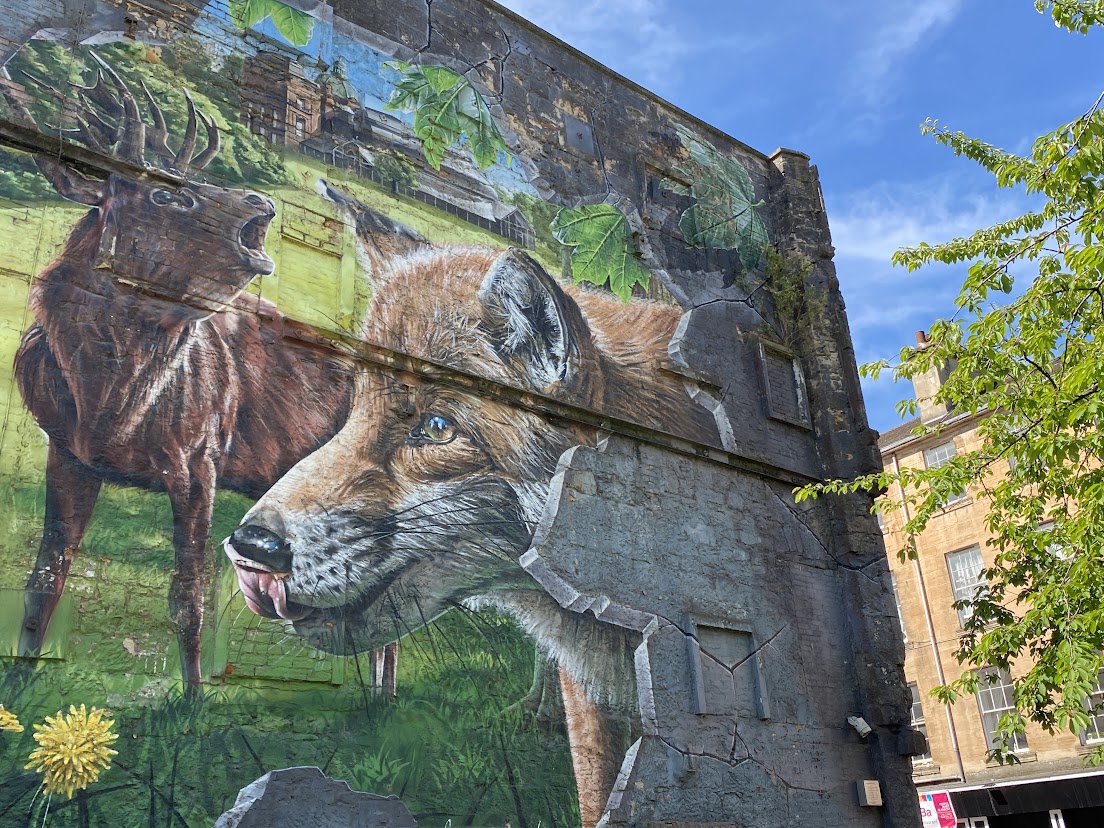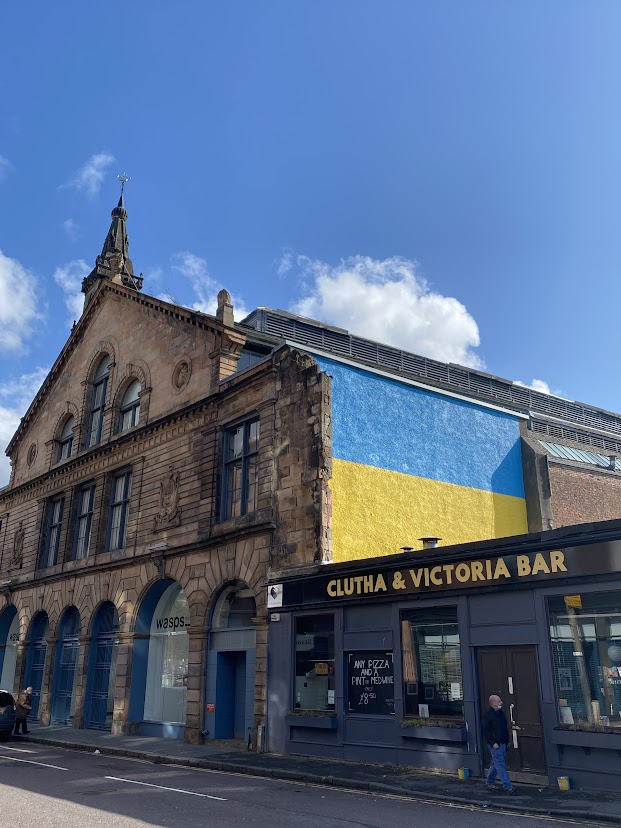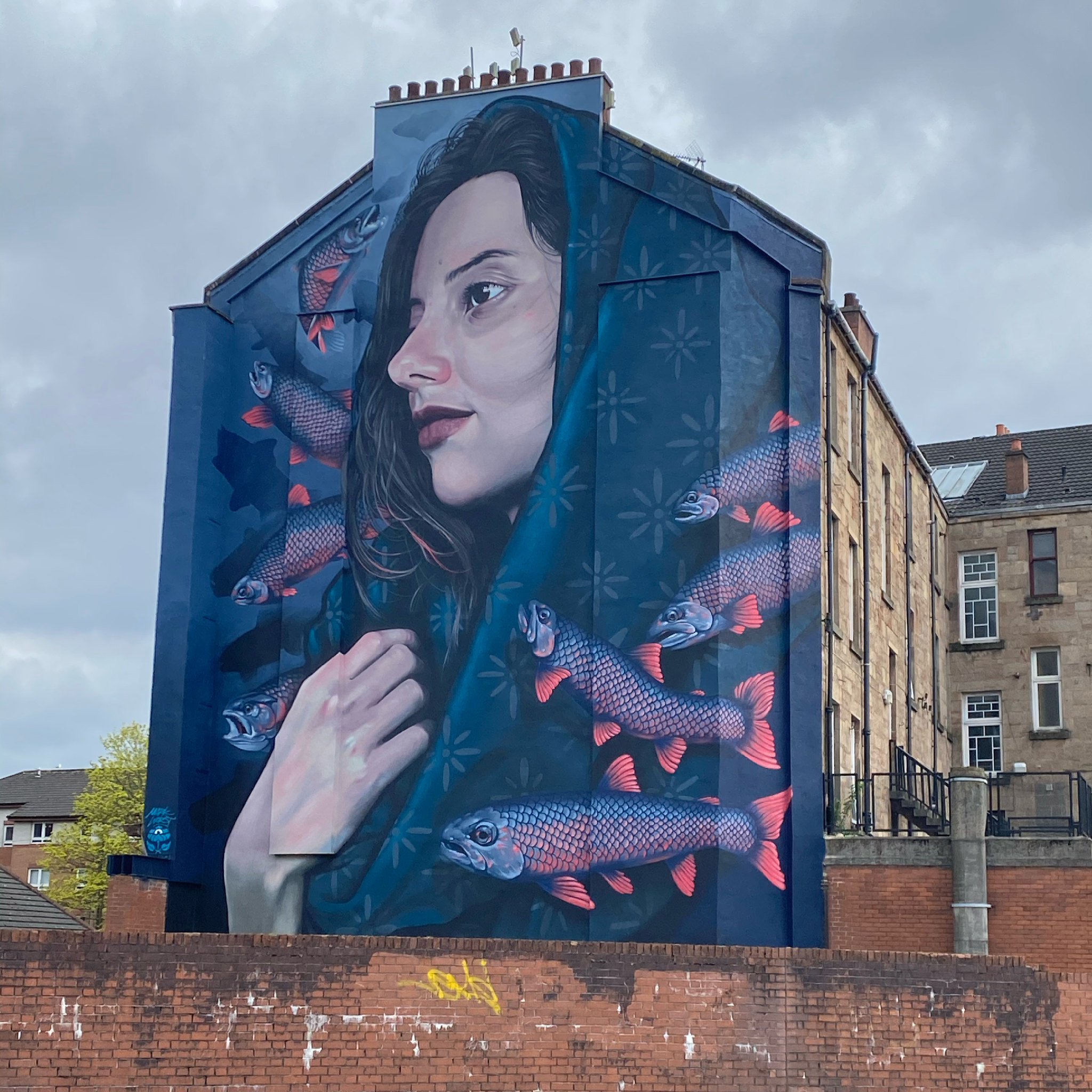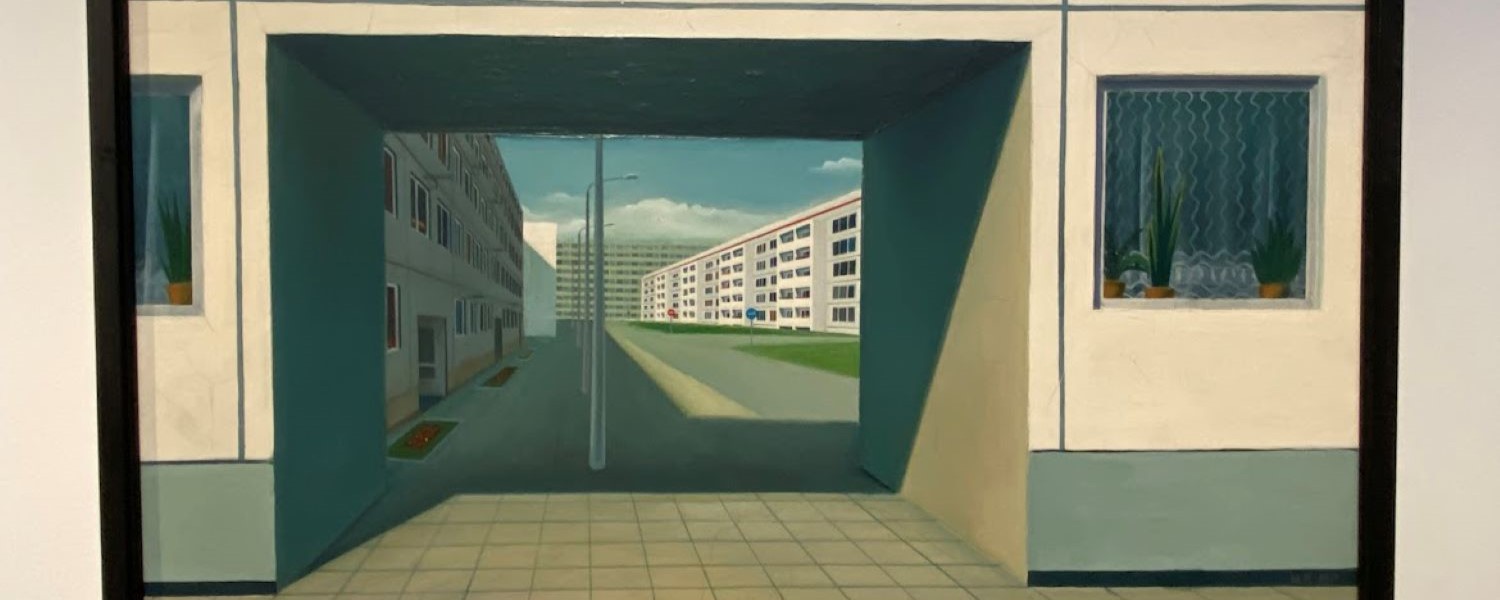For those of us living in, working in and passing through towns and cities, street art has become as familiar as road signage and commercial advertising. Usually taking the form of murals, street art has multiple purposes: it provides artists with a means of displaying their talents and expressing themselves; it can help a place tell a story about itself, highlighting the people and things that have made it what it is today; and it can contribute to the regeneration of a place, demonstrating that communities care about their environment.
Using images from Glasgow – a city with a strong tradition of street art – this photo essay highlights some of the historical, social and artistic elements that have helped to transform parts of the city. It also features extracts from articles and reports that have underlined the importance of street art.
“Artists have embraced the street and the built environment as integral to their work and practice, individual pieces reflecting context and location as surfaces become living canvases, rehumanizing the urban landscape.”
– Asli Aktu: Shaping Places Through Art
“In the process of creating and searching for street art pieces, both the artist and the viewer often get to explore parts of the city they would rarely visit otherwise. Places such as alleys or empty lots, dead spaces below or around bridges and other infrastructures, even off-limits terrains such as abandoned tunnels.”
– Javier Abarca: From street art to murals: what have we lost?
“According to a research on the effect of mural on personal crime and fear of crime conducted by Md. Sakip, R. et. al. (2016) in Ipoh, Malaysia, most … strongly agree that they are feeling safe when using back alleys with the art mural on a wall. A safe environment is achieved as there are better opportunities for public surveillance caused by the increase in tourists and local community’s awareness. If the environment continues to be safe, the more tourists will be attracted to visit the city.”
– Siti Syamimi Oma: Bringing the New to the Old : Urban regeneration through public
arts
“Murals are a reflection of the community. They can be historically significant because they serve as a reminder for a particular struggle or victory for the community. They can be beautiful and uplifting, generating a source of pride for residents of a particular neighborhood.”
– Summit Learning & C3 Teachers: Does street art make communities better?
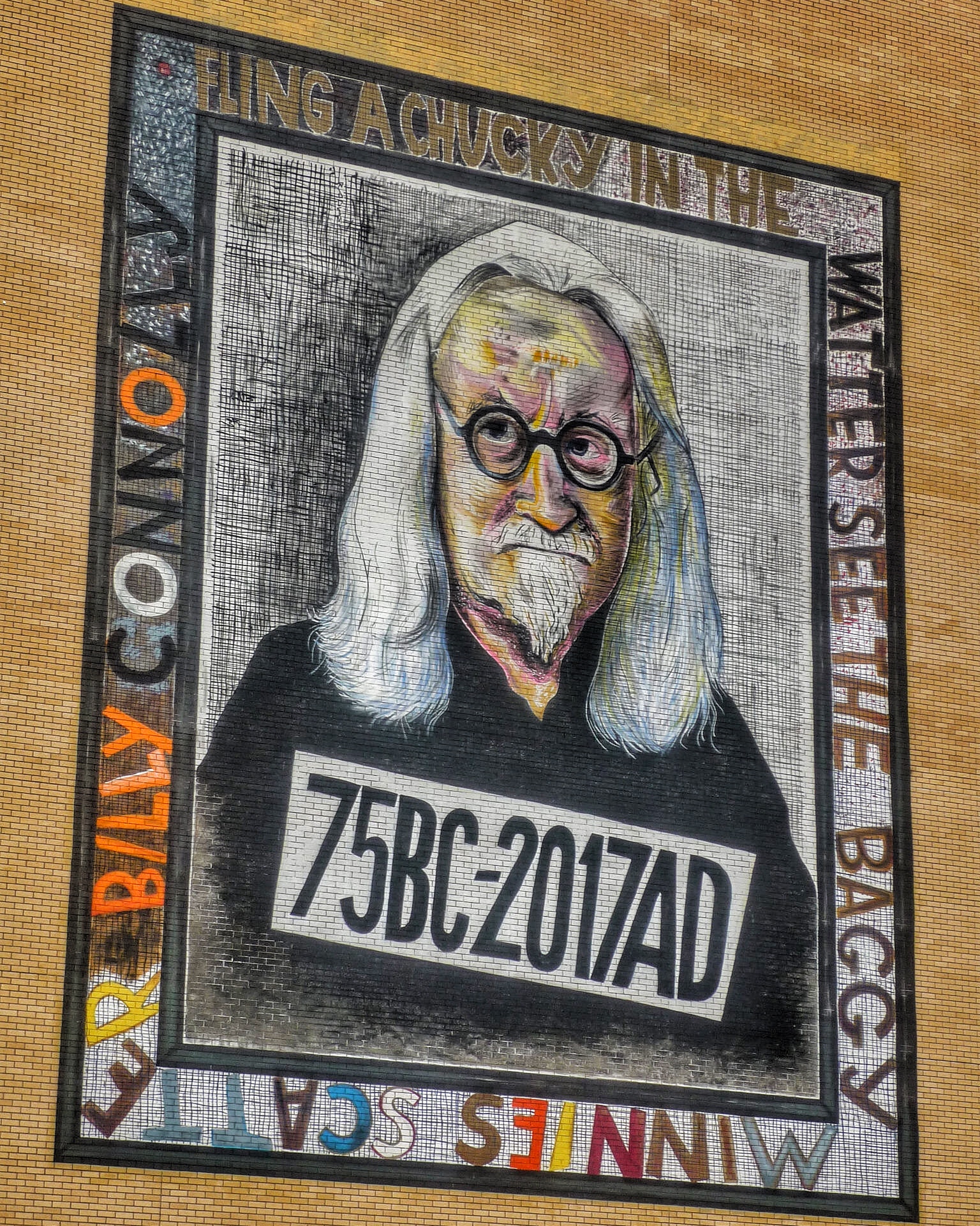
“Art can celebrate the qualities that make one place different from another. The best of public art can challenge, delight, educate and illuminate. Most of all, public art creates a sense of civic vitality in the cities, towns and communities we inhabit and visit.”
Americans for the Arts: Public Art Network Council Green Paper
“With its ability to embrace multiple urban subcultures and visual styles in a globally distributed practice, street art provides a new dialogic configuration, a post-postmodern hybridity that will continue to generate many new kinds of works and genres.“
– Martin Irvine: The work on the street: street art and visual culture
“Whether sanctioned or unsanctioned, murals are a key component of place-making. They may even have the power to change neighbourhoods.“
– IBI Group: Street murals – the power of public art
Many of the murals included in this blog post are featured in this guide accompanying Glasgow City’s Council’s Mural Trail.
Further reading: more from The Knowledge Exchange on arts and culture
Could arts and culture hold the key to the digital divide?
From rainbows to Banksy – have lockdowns created a new appreciation for the value of the arts?
Share
Related Posts
Tackling geographical inequalities is critical for ensuring that all parts of the country have the potential to prosper. When the UK was a member of the European Union, it was entitled to a share of funding from the EU’s structural ....
By Ian Babelon A new-old concept for proximity “Are we there yet?” Parents may patiently nod to their children’s insistent nudges on a 20-minute journey to… somewhere. Quite rightly, researchers have asked: twenty minutes to what? The answer may well ....
By Ian Babelon In the first part of two blog posts, published on 22 May, Ian Babelon provided examples of good practice in retrofitting social housing. The second part of this blog post looks at estate-wide and area-wide social housing ....


